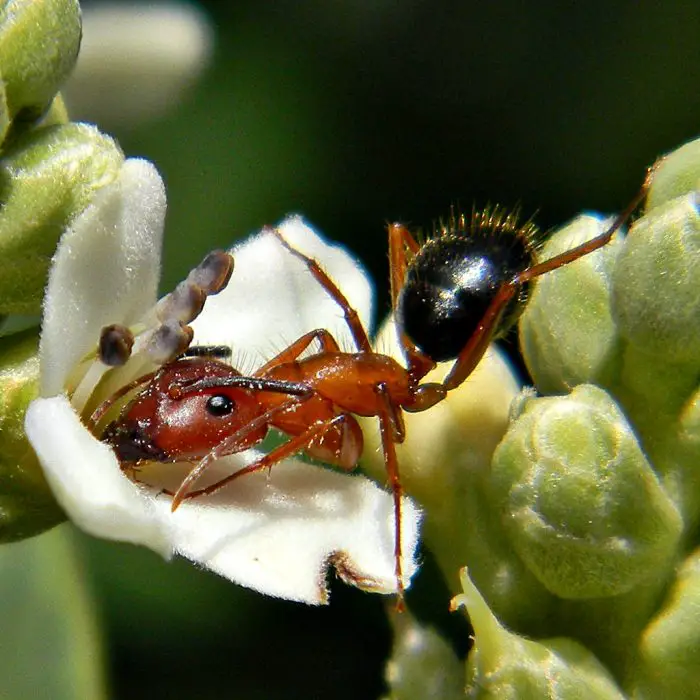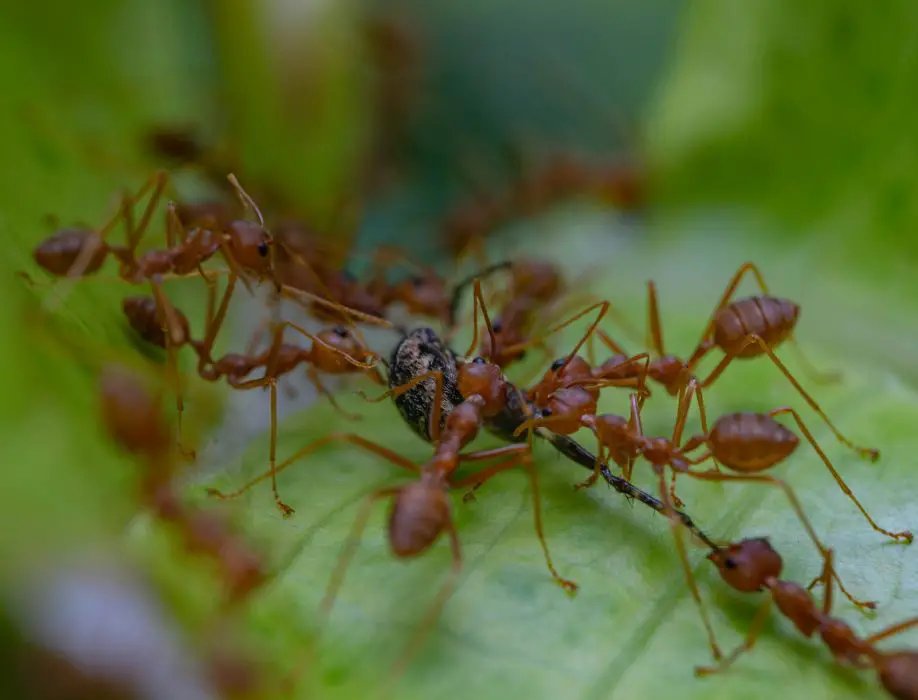We will explore the world of ants in Kansas, a topic that offers much to explore and appreciate. These tiny creatures play a crucial role in our ecosystem, contributing significantly to environmental balance.
Kansas, with its diverse landscapes, is home to a wide array of ant species, each displaying unique behaviors and characteristics. Understanding these ants is vital, as they significantly impact both the natural world and human activities.
Types of Ants in Kansas
In Kansas, there is a wide variety of ants, with over 100 different species found in the state. Some of the most common types of ants in Kansas City include acrobat ants, carpenter ants, odorous house ants, and pavement ants. These species are frequently encountered by residents and can have varying behaviors and characteristics.
Additionally, other ant species found in Kansas include pharaoh ants, field ants, thief ants, and fire ants. Each of these species contributes to the diverse ecosystem of Kansas, and understanding their presence and behaviors is important for both ecological studies and managing potential interactions with humans.
1. Acrobat Ants (Crematogaster spp.)

In the varied landscapes of Kansas, Acrobat Ants perform their high-wire acts. Explore the world of these unique ants known for their acrobatic abilities.
- Size & Color: Typically, about 3 to 4 mm, ranging from light brown to black.
- Habitat: Found in wooded areas, often nesting in dead wood or tree stumps.
- Biodiversity Impact: Assist in breaking down decaying wood, aiding in nutrient cycling.
- Complications: Can enter homes and become a nuisance.
- Impact: A part of the natural decomposition process but occasionally problematic in urban settings.
2. Carpenter Ants (Camponotus spp.)
Carpenter Ants in Kansas showcase their architectural prowess, tunnelling through wood. Delve into the life of these large, industrious ants.
- Size & Color: Among the larger ants, ranging from 6 to 12 mm, black or dark brown.
- Habitat: Prefer moist, decaying wood, often found in damaged trees and wooden structures.
- Biodiversity Impact: Play a role in wood decomposition and forest ecology.
- Complications: Known to cause structural damage to buildings.
- Impact: Ecologically important but can be detrimental to human-made structures.
3. Odorous House Ants (Tapinoma sessile)
Roaming the homes and gardens of Kansas, Odorous House Ants leave a distinct scent trail. Unearth the secrets of these common household ants.
- Size & Color: Small, about 2.4 to 3.3 mm, dark brown to black.
- Habitat: Adaptable, living indoors and outdoors in moist environments.
- Biodiversity Impact: Their role in the ecosystem is not well-documented.
- Complications: Can invade homes in search of food, especially sweets.
- Impact: A frequent nuisance in homes but with limited environmental impact.
4. Pavement Ants (Tetramorium caespitum)

Pavement Ants in Kansas claim their territory in urban and suburban areas. Discover the life of these small ants beneath our feet.
- Size & Color: Small, about 2.5 to 4 mm, dark brown to black.
- Habitat: Common in urban areas, nesting under sidewalks and building foundations.
- Biodiversity Impact: Minimal direct impact on native biodiversity.
- Complications: Can infest homes and buildings, foraging for food.
- Impact: More of a nuisance in urban areas than an ecological threat.
5. Pharaoh Ants (Monomorium pharaonis)
In Kansas, Pharaoh Ants reign supreme in their hidden indoor colonies. Step into the world of these tiny, persistent invaders.
- Size & Color: Very small, about 1.5 to 2 mm, light yellow to red.
- Habitat: Prefer warm, humid environments, often thriving indoors.
- Biodiversity Impact: Can disrupt local ecosystems by outcompeting native species.
- Complications: Pose hygiene issues and are difficult to eradicate.
- Impact: A significant pest in urban environments, impacting both homes and businesses.
6. Field Ants (Formica spp.)
Field Ants in Kansas are the architects of the soil, shaping the landscape in their own way. Explore the diverse world of these ground-dwelling ants.
- Size & Color: Varies, typically 4 to 8 mm, color ranges from black, brown, red, to bi-colored.
- Habitat: Found in open areas like fields and lawns, building mound nests.
- Biodiversity Impact: Aid in soil aeration and seed dispersal.
- Complications: Mound nests can be unsightly and disrupt lawns and gardens.
- Impact: Beneficial to ecosystem health but can conflict with human aesthetic values.
7. Thief Ants (Solenopsis molesta)
Thief Ants, the tiny burglars of Kansas, are masters of stealth and survival. Delve into the secretive life of these minuscule ants.
- Size & Color: Extremely small, about 1.5 to 2.5 mm, pale yellow to light brown.
- Habitat: Prefer to live in close proximity to other ant colonies, often stealing food.
- Biodiversity Impact: Role in ecosystem dynamics is complex due to their parasitic behavior.
- Complications: Can invade homes and contaminate food.
- Impact: While they play a unique role in the ant world, they are often considered pests in human dwellings.
8. Fire Ants (Solenopsis invicta)

Fire Ants are emerging as a heated issue, both for their sting and ecological impact. Uncover the fiery nature of these invasive ants.
- Size & Color: Generally about 3 to 6 mm, reddish-brown to black.
- Habitat: Prefer open, sunny areas, building mound nests.
- Biodiversity Impact: Disrupt native ecosystems and outcompete local ant species.
- Complications: Their painful sting poses a risk to humans and animals.
- Impact: Considered a significant ecological threat and a public health concern.
The Diversity of Ant in Kansas
In Kansas, the ant population showcases remarkable diversity, featuring both native species and those that are invasive. These species vary greatly in size, color, and behavior, each fulfilling a unique role in the ecosystem. From the common Black Carpenter Ant to the invasive Pharaoh Ant, Kansas’s ant fauna is as diverse as it is fascinating. Their ecological roles range from decomposers to predators, playing a vital part in maintaining ecological balance.
Ant Behavior and Social Structures
Ants are renowned for their complex social structures and behaviors. In Kansas, these structures are evident in the division of labor within colonies, encompassing roles like queens, workers, and soldiers. Ants exhibit a variety of behaviors, including efficient foraging techniques, intricate nest building, and sophisticated defense mechanisms. Their communication systems, primarily through pheromones, are a marvel of the natural world.
Ant Ecology and Interactions
The ecological significance of ants in Kansas cannot be overstated. They interact closely with various organisms, playing roles in seed dispersal and pollination, thus aiding in the propagation of numerous plant species. Ants also engage in symbiotic relationships with other insects, such as aphids, which can have both beneficial and detrimental effects on the broader ecosystem.
Impacts of Ants on Human Activities
Ants in Kansas have a mixed impact on human endeavors. While they contribute positively to agriculture through soil aeration and natural pest control, invasive species can disrupt native ecosystems and cause damage to human structures. Understanding and managing these impacts is crucial for maintaining a balanced coexistence with these small yet influential creatures.
Studying and Observing Ants in Kansas
For those interested in delving deeper into the world of Kansas ants, there are numerous ways to study and observe them. Setting up ant farms or engaging in field observations can provide valuable insights. Resources like entomology books and websites offer extensive information for identifying and understanding local ant species additionally participating in citizen science projects can also be a rewarding way to contribute to ant research and conservation.
Conclusion For Ants in Kansas
This exploration of ants in Kansas highlights their importance in our ecosystems and the need for a deeper understanding of their roles. Whether through observation, study, or simply appreciating their presence, we can all play a part in recognizing the value of these tiny but mighty creatures of the world. Let’s continue to explore and appreciate the diverse and captivating world of ants in our local Kansas environment.



